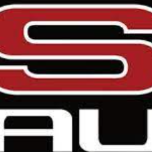Is Power (rwkw) Figure Everything? Why Are People So Hung Up On Kw Figures
Announcements
-
Latest Posts
-
Yea the photos aren't the best. When I was pulling the bumper and headlights out there was a bodyshop guy looking on for it, there is a slight bend behind where the passenger headlight is, but we're talking a few MM and there is a little bit of a bend for the reo. That said it's supposedly well within the "Drill a hole in it and pull it out with a slide hammer to be close enough" and be on our way. The other option is to buy a GTR reo for the GTR bumper bits but this is a $2000+ fix for something Mr Hammer can probably do 99% of the job for and everything will/can line up pretty closely-to-good-enough.
-
That's a write off for sure... Part out? 😛 I kid. It looks like the rad support has a minor minor bend in it too where the rep support sits near. Could just be the photos (and me not wearing my glasses right now). Worst case is you can buy a new radiator support, have it swapped over, and leave the car in paint jail for 12 to 18 months while you build the motor to handle twin turbos or a Harrop SC...
-
It seems the definition of "Gregging" something might need to be expanded?
-
This is why I suggested that there is really nothing that can safely be done in the engine bay at this budget level. Just the work to reassure yourself that the engine won't instantly crap itself the moment the boost gets turned up will wear out the piggy bank long before the first turbo gets installed. Spend $10k and still not have any extra performance? My tip is a version of our standard advice from 15 years ago about buying a GTR, which is not to buy one unless you can afford to buy two. The new version is not to modify a GTR unless you have all the funds required to do it all at once, properly, and enough to rebuild it after it blows up.
-
By Murray_Calavera · Posted
Oh, I forgot to mention this before. It is accepted that your taking on risk buy turning up the power on a 30 year old stock motor. You can lower the risk with the ECU engine protection, but this is more money on sensors. CAN wideband, oil temp, oil pressure, coolant pressure, fuel pressure, air temp, etc. It adds up quick. I am a huge fan of running all of the engine protection the ECU offers. You'll have to decide for yourself how you want the engine protection setup and what you think is worth monitoring.
-




Recommended Posts
Create an account or sign in to comment
You need to be a member in order to leave a comment
Create an account
Sign up for a new account in our community. It's easy!
Register a new accountSign in
Already have an account? Sign in here.
Sign In Now